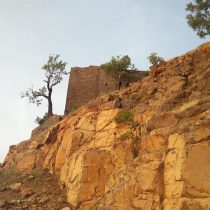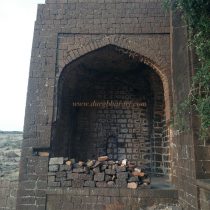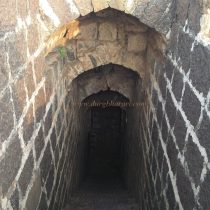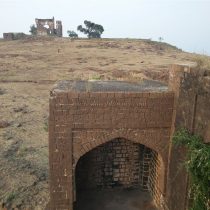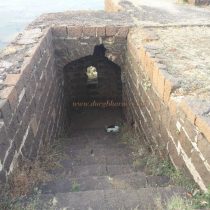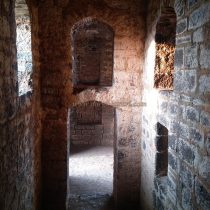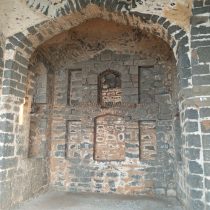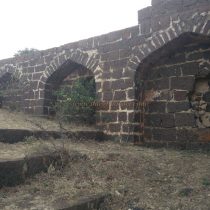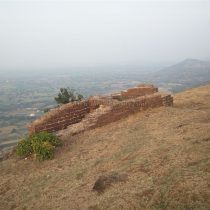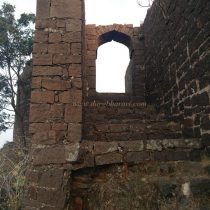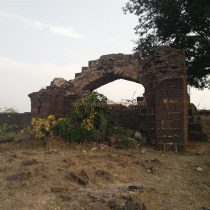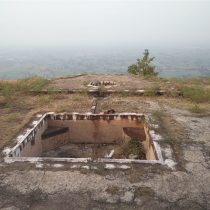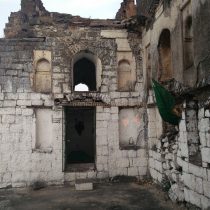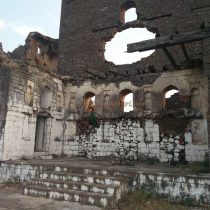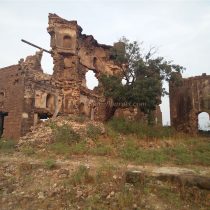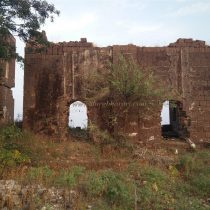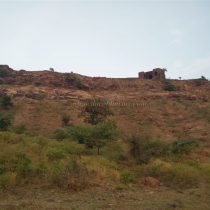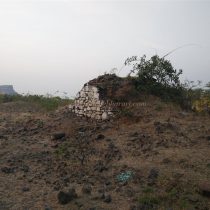MANJARSUMBHA
TYPE : HILL FORT
DISTRICT : NAGAR
HEIGHT : 2575 FEET
GRADE : EASY
You can see many forts in the Ahmednagar district. Some of these forts are familiar to all trekkers while some forts are unfamiliar and neglected. One such neglected fort is Manjarsumbha. On the Ahmednagar-Aurangabad National Highway, at a distance of 10 to 11 km from the town, on the left is the fork of Wambori village. At a distance of 9 km from this fork, behind Manjarsumbha village, there is a small but beautiful fort called Manjarsumba. This small fort in the Agargaon mountain range rises from the village itself and you can see the remains of tall buildings and entrances on it from a distance. From the village, an unpaved road on the right leads to a bastion at the foothills of the fort within 10 minutes. There is a small Maruti temple at the top of this bastion. This part of the fort has small ramparts and moats.
...
Elsewhere, the fort is covered with a natural moat. The fort is generally triangular and is spread over an area of 8 acres. The fort has two gates, one on the south and one on the west. Since the height of the fort is low from the base and the unpaved road goes up, in just fifteen minutes we reach the main gate on the west side of the fort. The main entrance of the fort is still in good condition and has a different style. The arches, domes, and carved windows of this mighty door are worth seeing. There is a staircase to reach the upper part of the gate and from there the entire area of the fort and a distant region can be seen. After entering through the main gate of the fort, turn left to see a grand but dilapidated three-story building. According to the locals, this is a palace built during the Nizam's rule, while according to some people it is the palace of Shardul Baba. There are various opinions about the history of this building. There are a tomb and a fountain in this building. The water of the lake is diverted to this fountain. To the left of the palace is the Chief’s building and a barn, below it is the bathroom and to the right is a spacious dry lake. Near this lake, you can see the valley in front of you. This side of the fort is deep and naturally strong. Due to this, the fort does not have any ramparts on this side except the crumbling wall of the bastion which has been destroyed over time. Apart from these remains, the fort has a secret door and another gate to the north, and a three-story majestic bastion. If you go down a little to the left of this bastion, you can see the remains of the ramparts. There are steps to get down to the bastion. This bastion can be reached by walking along the ramparts. If you look from the arch on the left side of the bastion, you can see the ramparts of the fort. There is another floor under this bastion and there is a window to descend into it. There are stone slabs at a distance of about 3-4 feet in the wall to descend through this window. This floor is built for observation and there is an excavated water cistern about 20 feet outside the fort. A path is designed in such a way that you can easily draw water from the cistern through the window. There is a door on the right to exit the bastion. After exiting this gate, you can see some steps and the remains of the ramparts at the end. Here is the second back door of the fort. After descending a few steps through this gate, one can take a detour to the bottom of the fort. On the way down, if you go straight ahead, you will see 9 cisterns carved in the rock. The fourth cistern is under the bastion. The water in these cisterns is not potable as it is not in use. From the bottom of the bastion to the top is made up of rock which is about 100-125. This is where your fort round ends. From here, one would go down or climb the steps and come back to the back door of the fort. It takes about 2.30 hours to walk around the entire fort. On the way back to the village, there is a temple of Gorakshanath on a hill to the right. It is called Gorakshagad, but it is not a fort but just a temple. The history of this fort is not available. This fort was built during the Nizam's rule as a place of communication and reconnaissance and also as a resting place. This unfamiliar fort, which is close to the city, should be visited at least once.
© Suresh Nimbalkar

